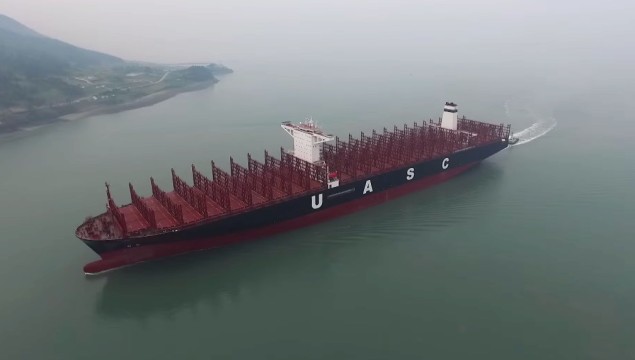MAY 11, 2015
Theories abound in the absence of clear information about
just what went on behind the scenes in the aftermath of disastrous storm
In the aftermath of Superstorm Sandy, many insurance
policyholders were denied coverage after engineering
reports determined that their damage supposedly pre-existed the storm or
was due to natural earth movement rather than raging floodwaters.
But this mystery remains: Exactly why would insurance
adjusters and engineers intentionally go out of their way to shortchange and
deny policyholders coverage?
The confusion revolves around the fact that most
flood-insurance claims -- unlike other types of insurance – are paid
using federal taxpayer money, so private companies processing the claims
would have little financial incentive to underpay their customers.
As federal inquiries continue, more information is likely to
come out over the coming months detailing just what happened and why. In the
meantime, experts interviewed for this article have floated a number of
theories and partial explanations for what may have transpired behind the scenes.
1. Unbalanced penalty structure
Since private companies process flood insurance claims on
behalf of FEMA -- issuing payouts from federal coffers -- they’re on the hook
for repaying any excess money if government auditors later find those payments
were issued in error. But critics point out that they don’t face equally severe
penalties for underpaying policyholder claims.
“The only thing that motivates these guys is fear of pain,”
said David Charles, who’s worked as an adjuster for close to four decades, and
now represents homeowners and business owners fighting their insurance
companies.
Charles and others speculate that this unbalanced penalty
structure has led to insurers, in the aftermath of Sandy, systematically
rejecting legitimate claims and otherwise paying less than they should.
A federal task force is currently examining how to balance
the sanctions in the future, so insurers would be penalized equally, whether
they pay out too much or too little.
2. Business as usual
“Originally, the notion was that insurance companies paid
what they owed. No more, no less,” said Jay Feinman, who teaches insurance law
at Rutgers. But over the past few decades, companies have brought in management
consultants who’ve dramatically changed the economics of the industry.
“We’ve seen a transformation where claims become a profit
center. There’s an attempt to reduce costs by paying less and delaying payment
of claims,” he said.
To be clear, these changes apply to claims for homeowners’
coverage -- which companies pay out of their own pockets -- but not to federal
flood-insurance policies, where they have no similar profit motive.
Still, notes David Charles, many of the same adjusters and
engineers handle both types of claims. He thinks that if it’s their standard
operating procedure to deny homeowner claims, they’ll likely reject many valid
flood claims as well.
3. Giving insurance companies what they want
When homeowners filed 74,000 flood claims in New Jersey --
including some 16,000 that required engineering inspections -- insurance
companies were overwhelmed, and the scale of the disaster strained their
resources. So they brought in teams of outside engineers -- hired guns who
travel around the country from disaster to disaster to assist with damage
inspections.
Following up on the previous theory, many of these engineers
are used to dealing with homeowners’ insurance claims, where they’re under
pressure from their firms to write reports that make the insurance carriers --
their clients -- happy, said Chip Merlin, an attorney representing hundreds of
Sandy victims in the state.
“If the insurance companies get reports from these engineers
that side with the policyholder and they have to pay more money, those honest
engineers get de-listed because the engineering firm wants to keep business
with the insurance carrier,” he said. “So you end up only with those that write
what I would say are conservative reports that help the insurance company pay
less on claims. That’s a big problem in the industry.”
4. Quantity over quality when it comes to inspections
Merlin thinks that many of the current problems stem from
how adjusters and engineers are paid in the first place.
“We don’t pay them to get an accurate estimate. They get
paid on a percentage basis of the amount of claims that they do. So they try to
write not just one home a day. They’ll try to do about eight of them,” he
explained.
“We’re incentivizing the adjusters to go out there and write
massive amounts of estimates very quick, way too shoddy, not with the outlook
of them fully getting all the money to the policyholder, but in a system of
compensation to the adjusters that prohibits that.”
He recommends reforms to the National Flood Insurance
Program that would allow adjusters and engineers to spend as long as they need to
do a thorough job, so all homeowners get the consideration they deserve.
5. Inspectors were overtaxed and exhausted
Many storm victims have complained that engineers deemed
their homes not substantially damaged or concluded that their damage was caused
by long-term settlement of the earth – even though those inspectors never even
looked in their crawlspaces.
While the financial incentive to rush through and move onto
the next house was probably a significant factor, there was also the human
element, suggests Amy Bach with United Policyholders, a national insurance
consumer advocacy group.
“With Sandy, the damage was so widespread and so awful,” she
said. “Going into houses that are wet and smelly and soggy and dark, most
people want to get in and get out. It’s not like you want to spend time looking
at every nook and cranny. So some of the underestimating of Sandy damage was
unintentional.”
6. Possibly unqualified or poorly trained inspectors
“To me, it seemed like she was very inexperienced,” he said.
“If I remember right, there were some things that she didn’t even know what
they were, some building components that she really wasn’t aware of.”
As if that’s not concerning enough, lack of construction
expertise is just the tip of the iceberg, said Amy Bach.
“The National Flood Insurance Program policy is very
specific. It’s got a lot of nit-picky rules. And some of these adjusters are
just not that experienced with it,” she said. “Then there were some that
weren’t adjusted properly because the adjusters were using Xactimate or a
similar software program for estimating the repair costs, and the accuracy of
the estimates these software programs produce is only as good as the training
that the individual adjuster had in using the software.”
7. Valid policy exclusions and denials
It’s worth noting that one reason policyholders may have
received less than they were expecting isn’t necessarily because they were
shortchanged – some were legitimately denied.
Insurance industry representatives say some people were
confused about whether certain damage was caused by wind or water, and thus
whether they should be reimbursed by their homeowners’ insurance or their flood
policy.
Others may have been underinsured to begin with, or they never bothered
to read the fine print when they purchased their policy to fully understand the
various exclusions that wouldn’t be covered. Some exterior structures such as
decks, sheds and landscaping probably wouldn’t have been covered, for instance,
but many policyholders weren’t necessarily aware of that -- nor did they
realize that the contents of their homes would only be covered at a depreciated
rate.
8. Insurance reimbursement rates are too low
Private insurance adjusters processing flood claims on
behalf of the federal government use standardized price lists to determine how
much to reimburse homeowners for their losses. But some observers, like
attorney Chip Merlin, fear that the figures used are unrealistically low in
some cases.
“We think it will come out in some of the congressional
investigations that the database far underestimates the cost of estimates,
especially in the barrier island coastal areas,” he said. “Right after the
storm for the first year, it was very difficult for the community to get
logistic supplies and enough repairmen out there, and the prices charged by
contractors were quite a bit higher as a result of it. It’s just a very
expensive place to do rebuilding. You have a very short construction cycle
because in the wintertime, it’s nearly impossible to put roofs back together
and things like that. In the summertime, you have an inundation of people, so
it costs more to build on the shore. And a lot of the pricing isn’t
geographically accurate enough to reflect that.”
9. Attorneys profit from increased litigation
It’s not a widely held theory, but some have suggested that
there was a sort of conspiracy among the lawyers representing insurance
companies to advise them to do whatever they could to avoid overpaying Sandy
claims, even if it meant paying far less than they should. After all, lawyers
are the one class of individuals -- so the thinking goes -- who benefit from
the resulting lawsuits. And since these are federal flood-insurance policies,
it’s not the private insurance companies that get stuck with the legal bills,
but rather the government -- and by extension, taxpayers.
10. Honest mistakes
Jay Feinman -- the Rutgers law professor -- has thoroughly
researched the multitude of problems policyholders have faced following
previous disasters such as Hurricane Katrina. A few years ago, he even wrote a
book called “Delay Deny Defend: Why Insurance Companies Don’t Pay Claims and
What You Can Do About It.”
He calls the current issues storm victims are facing
puzzling and mysterious, but he thinks much of the explanation may ultimately
be less intriguing that some others have speculated.
“My observation about this industry is it tends to be less often
about people meeting behind closed doors coming up with vast conspiracies,” he
said.
“Mistakes are made, particularly when companies have to handle tens of
thousands of claims all at once. And there are going to be mistakes that often
will run in one direction. So I think when FEMA starts reviewing these claims,
we’re going to see all kinds of issues. And fraud may not be the largest part
of it.”
Source: http://www.njspotlight.com

























